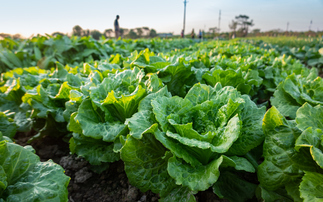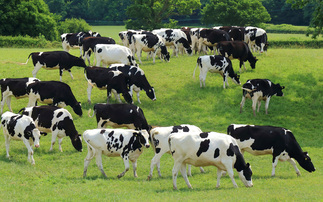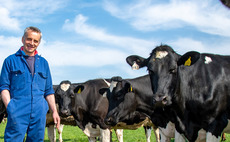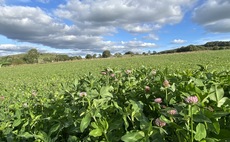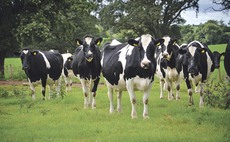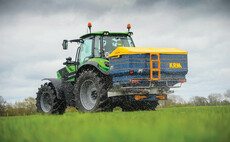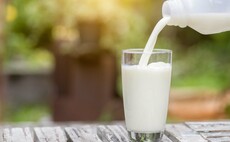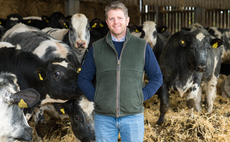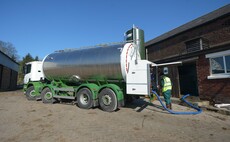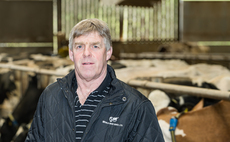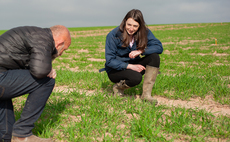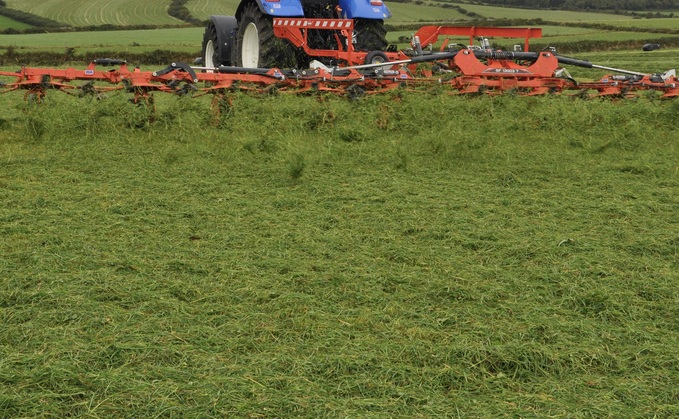
According to Ecosyl silage specialist, Peter Smith of Volac, many farmers either have a very wet silage cut or a low energy, fibrous cut in clamps, or both - resulting in milk yield depressions of upwards of 1.5 litres/cow/day. Clamp slippage is also an increasing issue, he notes.
"Learning from these and other issues offers an opportunity to respond to them in 2024," Mr Smith points out. He offers the following tips:
1. Consider an early first-cut
Farmers who took an early first-cut gained a head start in 2023, says Mr Smith. "Taking first-cut early, for example during April, may not produce much bulk, but it clears out old, overwintered grass leaving fresher growth for a better second-cut. Farmers who did this often had two cuts ‘banked' by the time a normal first-cut was taken by the end of May."
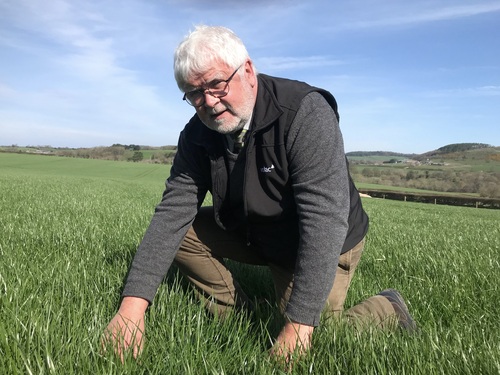
2. Think about cutting more often
Linked to the above, Mr Smith says farmers who cut more often, while grass was younger and leafier, continued to benefit. "Younger grass is more digestible, which means it's higher in metabolisable energy (ME), a key driver for milk production. It also tends to be higher in protein.
"Our research has also shown a silage yield improvement of 0.92 t/ha more total dry matter (DM) over a season by cutting more often and taking more cuts. More frequent cutting also reduces weather risks because lighter cuts are easier to wilt. It may simply be a case of moving from three to four cuts, or four to five. If one cut is compromised by the weather, it also represents a smaller proportion of the total tonnage ensiled."
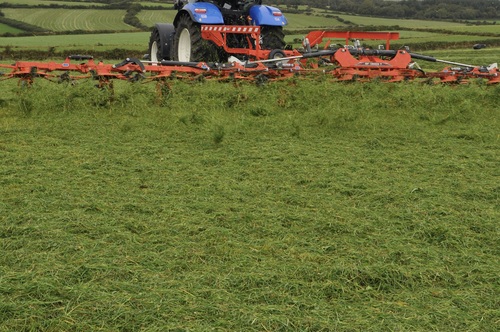
3. Fine-tune cutting to the weather
Although grass grew well during the early and latter parts of the season, the hot, dry June caused growth to nosedive, says Mr Smith. During mid-summer, grass naturally becomes stemmier and more lignified, which reduces digestibility, he says. But June 2023 exacerbated this, which may explain the poorer silages made during this period, he believes, and the resulting dips in milk yields.
"Consider cutting a bit earlier during prolonged sunny weather as grass is at risk of becoming excessively stemmy and lignified.
"At the opposite end of the weather scale, we also saw fairly wet silages made during rainier months. Although not ideal, provided effluent isn't going to be a problem, you might be better off ensiling cut grass slightly wetter than normal if rain isn't abating, rather than leaving it in the field and risking losing more quality. The proviso is that the more water there is in silage, the bigger the fermentation that is required."
4. Manage clamp slippage at source
The increasingly common problem of clamp slippage often occurs in grass cut while still young and tender and when ensiled at less than 30% DM, says Mr Smith, and in clamps loaded too high and possibly over-rolled.
"To counter this, action needs taking at the point of making silage. Wilt to at least 30% DM, possibly 35% with very leafy material. Equally, don't load clamps too high as this increases pressure on the lower part of the clamp. Some farmers also place a row of bales in the middle of the clamp when filling it, for extra grip against silage moving forward, which seems to help."
5. Remember what an additive can bring
Mr Smith says although a proven additive, such as Ecosyl 100, is recognised for improving silage fermentation and preservation of quality and DM, there are scenarios where the case for ensiling with a proven additive becomes even stronger.
"Grass cut younger is a prime example because it tends to be lower in sugar for the fermentation. It can also be higher in unused nitrogen, which buffers the fermentation. Shorter cutting intervals also increase the case for improving the fermentation with an additive because there's less time for slurry bacteria to dissipate if applying slurry between cuts.
"Silage made wetter is another good case for an additive, as it requires a more extensive fermentation, and is at greater risk from clostridia bacteria from soil," he concludes.
For more silage strategies for your farm visit the Volac Cut to Clamp hub.
This post is funded by Volac.








